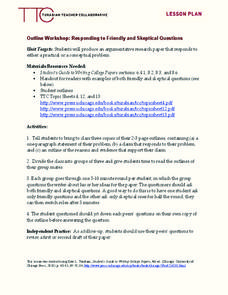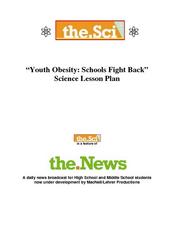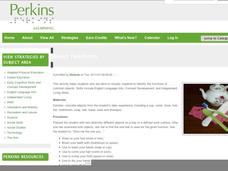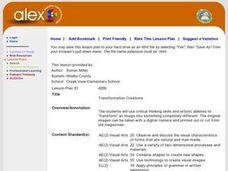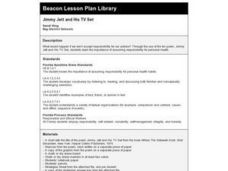Turabian Teacher Collaborative
Introductions: Formulating Problem Statements
Describing a problem efficiently doesn't solve it, but a well-crafted argument can move readers to action. High schoolers focus on structuring problem statements by reading examples of strong essays and working in groups to create...
Turabian Teacher Collaborative
Parts of Argument II: Article Critique
Break down the parts of argumentative writing with a critical thinking activity. High schoolers read an article of your (or their choice), and use a graphic organizer to delineate the ways the author structures his or her arguments.
Turabian Teacher Collaborative
Outline Workshop: Responding to Friendly and Skeptical Questions
Answering questions is the best way to hone and revise your argument. Foster receptive writers with a workshop activity that promotes peer editing and argumentative writing skills. Given lists of both friendly and skeptical...
Penguin Books
Teacher's Guide: Kindred by Octavia E. Butler
A teacher's guide for Kindred provides instructors with a wealth of materials to enrich either a full-class reading or independent study of Octavia E. Butler's popular science fiction novel. The activities are designed to...
Nazareth College
Chronological Order
First, next, and last, the elements of chronological order. In every story or text one can find a series of events that occur one after the other. To help learners with visual impairments conceptualize chronological order, this...
Alabama Learning Exchange
Illustrate A Song
Middle schoolers listen to various selections of music, discussing the interpretations of the song. They create a picture illustrating the feelings, mood, and message the music conveys.
Curated OER
Patriotism Reflected in Art and Literature (Part B)
Tenth graders compare and contrast the patriotism of Imperial Japan to its presence in the United States today. In this patriotism lesson plan, 10th graders write essays and participate in a classroom debate that requires them to...
Curated OER
Genre Lesson: Autobiography
Start kids thinking about point of view and autobiographies by telling them a short story about your morning (first person), and then asking a volunteer to re-tell the story to you (second person). There are tips to help you tie this...
Curated OER
Definition Poems
“Hope is a tissue, wiping away your problems and fears.” Use a Definition Poem Web worksheet to model for your class how to craft a free verse poem based on an emotion. After brainstorming topics, groups use the sheet to make comparisons...
Curated OER
How Do you Feel?
Learners discover how moods and perceptions can be affected by colors. As a class, they create their own color wheel and identify primary and secondary colors. They draw their own cool and warm color mosaic and discuss how each one of...
Curated OER
Making Gateway Middle School Handicapped Accessible
Students discuss the situation at their middle school about being handicapped accessible. In groups, they identify the various types of handicaps and their accommodations. They create a blueprint of the building and make suggestions in...
Curated OER
The Cinder-Eyed Cats - Storybook Theater
The students listen to the story "The Cinder-Eyed Cats." The students then chose individual parts to play in a theater like production. The students move like their character, be it a fish, an octopus, a lobster, a cat, etc. Water music...
Curated OER
Revisiting Recycling
Students find out what their school does to recycle and what community recycling programs are operating. Then they develop and practice their research and persuasive writing skills. Students also conceptualize and communicate ideas...
Curated OER
Why Is Water Important?
Pupils conceptualize and communicate ideas about the many varied and important uses of water. They create original art reflecting their ideas. Students write and read orally a sentence describing their illustration.
Curated OER
Youth Obesity: Schools Fight Back
Kids fight obesity by comparing the USDA food intake suggestions to what they personally consume throughout the day. They watch a video, read texts, and explore related vocabulary which they use as they compose an oral presentation.
Curated OER
Youth Obesity: Schools Fight Back
Explore nutrition and healthy eating habits with a study on youth obesity. Learners watch a PBS documentary on the obesity epidemic which discusses government programs aimed at healthier choices, as well as more localized efforts. Kids...
Curated OER
Research
High schoolers use different pieces of art and critique them. Using worksheets, they analyze the historical and cultural context of the art and the methods in which the artist used. They discuss their responses as a class and use them...
Perkins School for the Blind
Object Functions
What does that thing do? For learners with low or no vision, understanding an object's function is a necessary skill. Here learners handle a number of objects and are asked to determine which object is for a specific task. They can feel...
Perkins School for the Blind
Treasure Hunt
On, over, and under are some very common prepositions; but how can you teach these concepts to children with visual impairments? Here, is one way. Kids will practice following verbal commands as they go on a classroom treasure hunt. They...
Alabama Learning Exchange
Transformation Creations
Learners "transform" an image into something completely different using critical thinking skills and artistic abilities. They improve skills in using digital cameras and word processors.
Curated OER
Lift Every Voice and Sing
Students analyze sculpture, poetry, and music to gain an understanding of historical events. In this critical thinking skills lesson, students take a closer look at African-American history as they examine "Lift Every Voice and Sing'"...
Curated OER
It Was a Dark and Stormy Night
Using Alpha Smarts, 3rd graders write a "Story-in-the-Round". The end result of this project is one story for every student in the class that has been written by the entire class. Students create a PowerPoint presentation with a...
Curated OER
Using Personal Connections to Build an Understanding of Emotions
Students make happy and sad masks to examine their personal emotions, allowing them to verbally express their feelings and learn abstract concepts. They use their masks also to help them categorize their emotions and later chart them.
Curated OER
Jimmy Jett and His TV Set
Fourth graders engage withh the fun poem, Jimmy Jett and His TV, to explain the iimportance of assuming responsibility for personal health.
Other popular searches
- Teaching Conceptual Art
- Art Lessons Conceptual Art
- Conceptual Art Techniques
- Learning Conceptual Art




